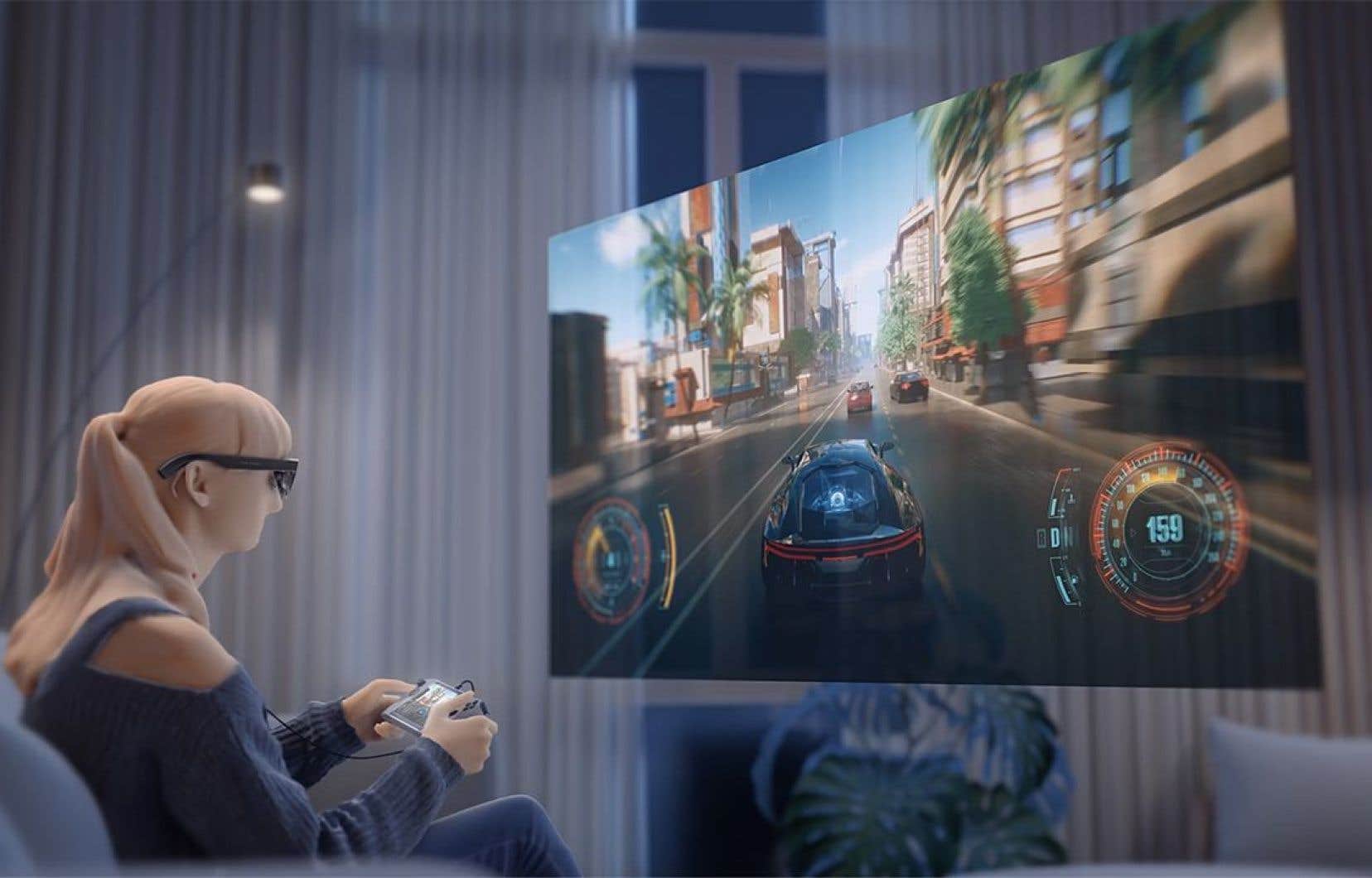We can’t stop progress, says the adage. In any case, we seem incapable of stopping electronic device manufacturers from going in all directions to meet consumer needs. And now that the big conference season is taking a break, we have a good overview of what the tech trends of 2024 will be. Here are eight of them.
Asus AirVision M1
The first augmented reality glasses are starting to see the light of day. The Asus AirVision M1 is one of them. These transparent microLED (MicroLED) glasses display before our eyes any content taken from the USB-C port of a PC, Mac or mobile. You can create a virtual office with as many floating windows as you want in a space that takes up a little more than 57 degrees of your field of vision. At Computex, Asus paired its AirVision M1s with a ROG Ally X video game console for its demo, which allowed you to have a large (virtual) screen in front of you, rather than the 7-inch screen of the console. Expect to see people around you wearing such glasses in the near future!
Asus Project Dali
We’ve talked enough about the advent of the AI PC, so Asus wanted to go elsewhere with Project Dali, a range of laptops whose back of the monitor is actually a very colorful 16-color E Ink display on which we can display the image of his choice. The image is static, but once selected, it remains unchanged without actually consuming any power, and it only adds a few millimeters to the laptop. A unique (and a bit futuristic…) way to personalize the appearance of your PC.
Acer Predator Z57
There are panoramic screens, then there are curved immersive gaming screens like the Acer Predator Z57, which is 57 inches diagonal, in a 32:9 screen ratio, twice as wide as a 16:9 monitor, but the same height. The resolution is 7680 x 2160 pixels, at a refresh rate of 120 hertz, thanks to microLED technology which offers vivid colors and very high contrasts. A must-have for gamers who don’t want to miss any of the action.
ELO Vagabond
A (very) rare Canadian-designed gadget made its debut at Computex this year. The Vagabond smartphone video game controller was created by the Ontario company ELO to meet a very specific need: to satisfy players disappointed with the compromises made by mobile controllers that are too compact or not very ergonomic. The handling of the Vagabond doesn’t lie: this accessory fulfills its promises. Or at least it will fill them when it goes on sale later this year.
Framework Laptop 16
Are you sick of the premature obsolescence of electronic devices? The Framework brand may have the solution: a laptop to assemble yourself. The Laptop 16 is a 16-inch screen variant of this concept, which costs between $1800 and $2300, depending on whether you order it pre-assembled or not. This allows you to choose the right peripherals, starting from basic modules, such as its Ryzen 7040HS processor and its Radeon RX 7700S graphics card. Years of performance in sight, and a lifespan extended by the possibility of changing aging modules only one at a time…
Monitormate ProBase
Laptop docking stations are plentiful. You place your Mac or PC on a base, to which you connect it by USB, and this acts as a bridge with all the accessories necessary for working: keyboard, mouse, monitor, etc. Monitormate’s ProBase Two USB 3.2 Gen 2 inputs provide ultra-fast connection or charging as needed. An upcoming version of this station includes a Qi charging pad for mobile phones. An elegant way to clear your desk of all unnecessary cables…
LatticeWork VAISense
In the category “these new technologies that are a little scary”, we find the VAISense facial recognition application from LatticeWork. This is software that can be installed on one or other of the network drives of the same brand, to which you can pair the surveillance cameras of your choice. The system recognizes and matches just about anyone identified in a photo, even if only part of their face is seen, and automatically displays security footage where the person appears. A LatticeWork spokeswoman said VAISense was modeled after the Chinese government’s vast surveillance system, but because it’s a Taiwanese app, it shouldn’t worry people outside China who are concerned about their privacy. This is far from reassuring.
Verbatim, wireless touch screen
Teleworkers are snapping up these external monitors that you plug into the USB-C port of a laptop or even a smartphone. The storage equipment brand Verbatim, recently acquired by a conglomerate called CMC, hopes to ride this wave and will offer a wireless variant this fall. The monitor with a diagonal of 14 to 17 inches, of your choice, is compatible with remote display functions from Microsoft, Google and Apple. It’s almost universal. For its power supply, a Qi contactless pad at the back of the monitor allows you to stick an extra battery there, and that’s it. Ingenious!
